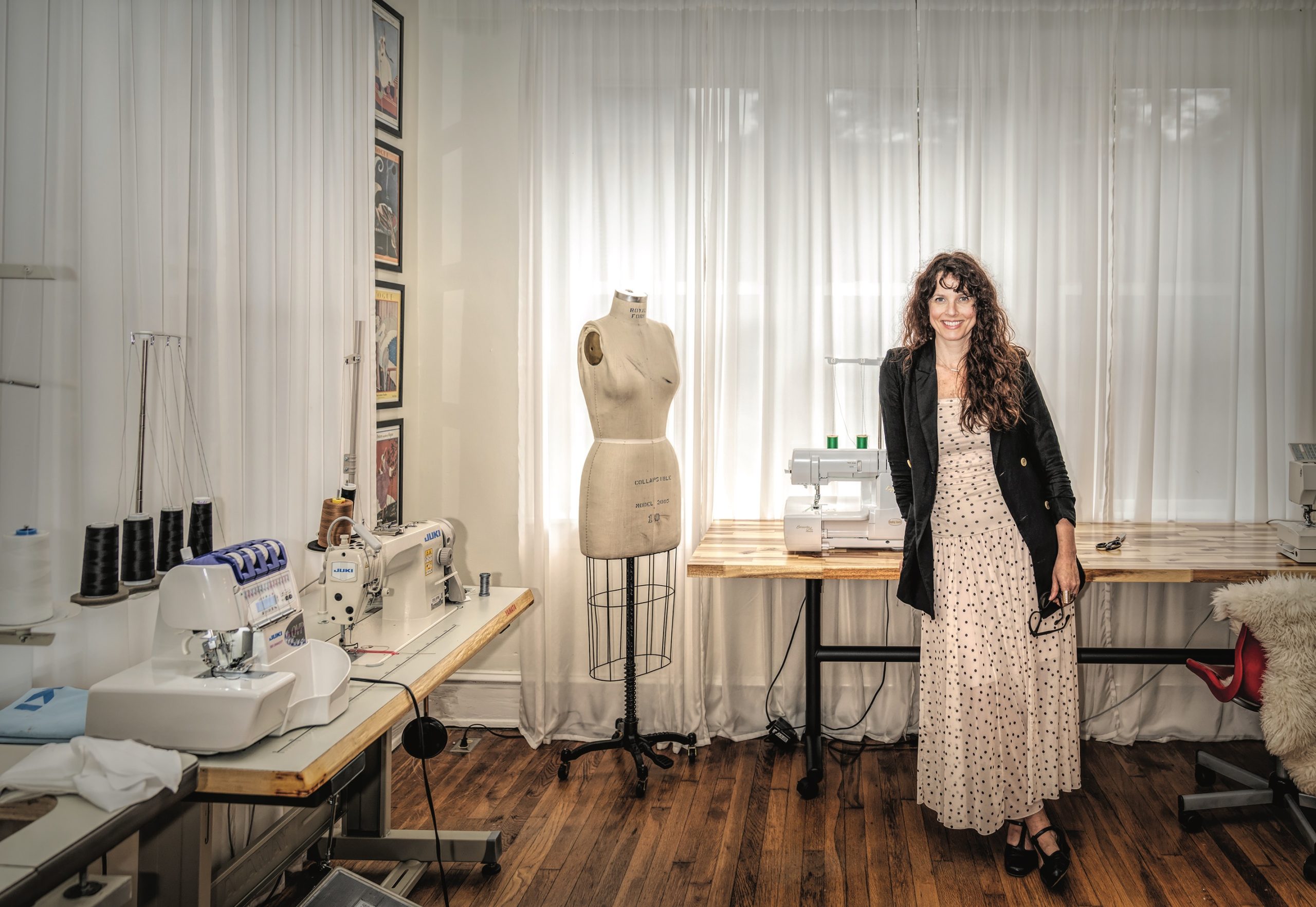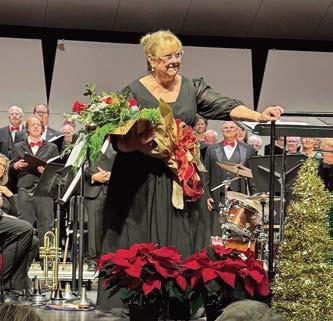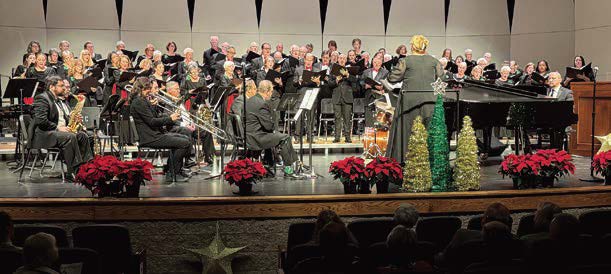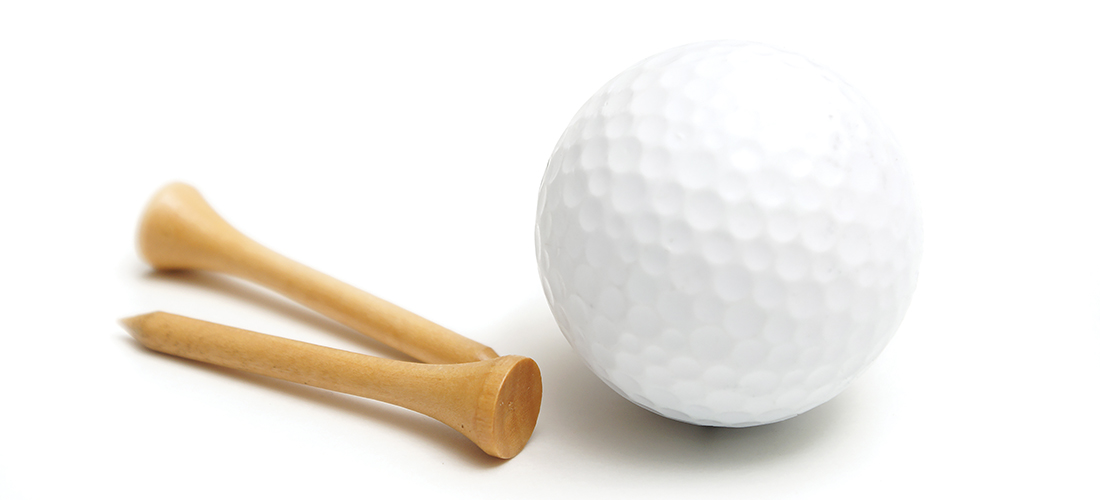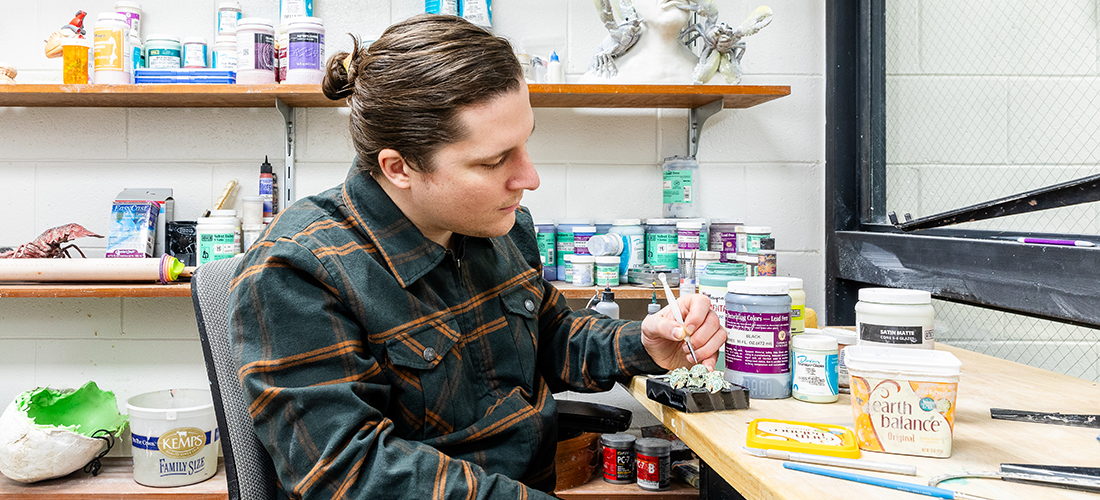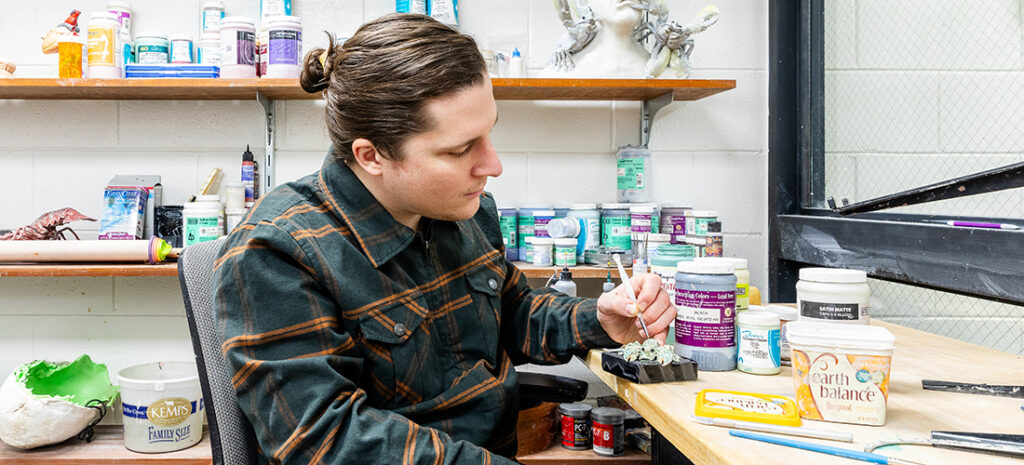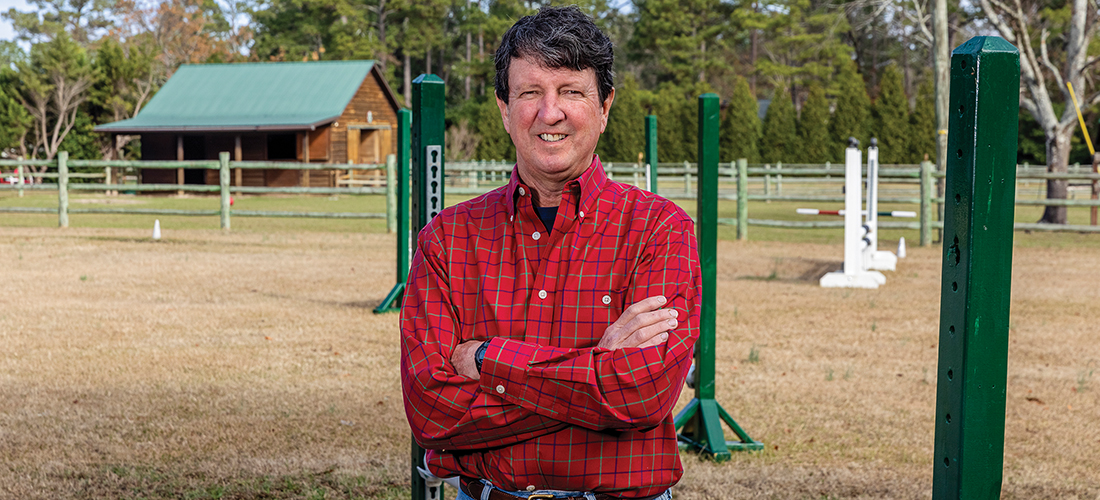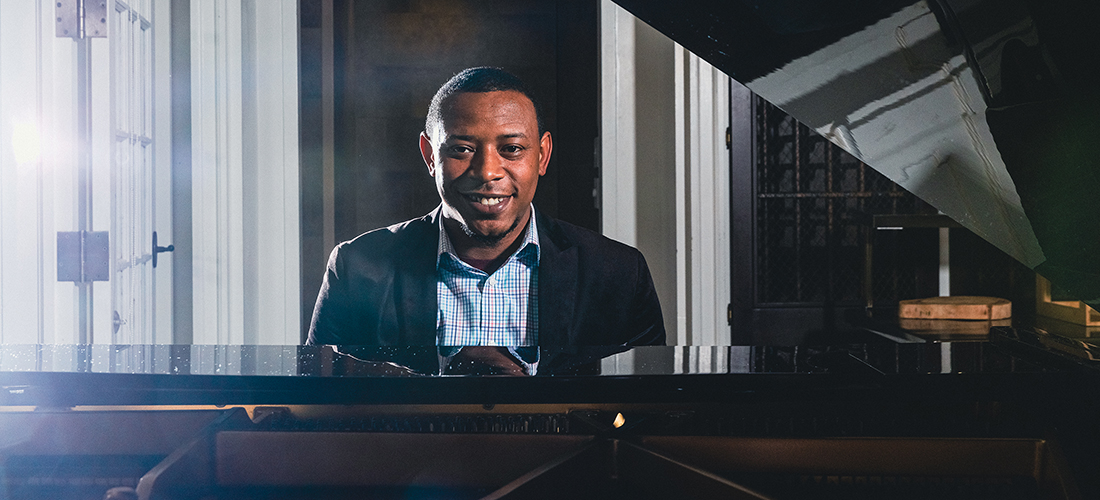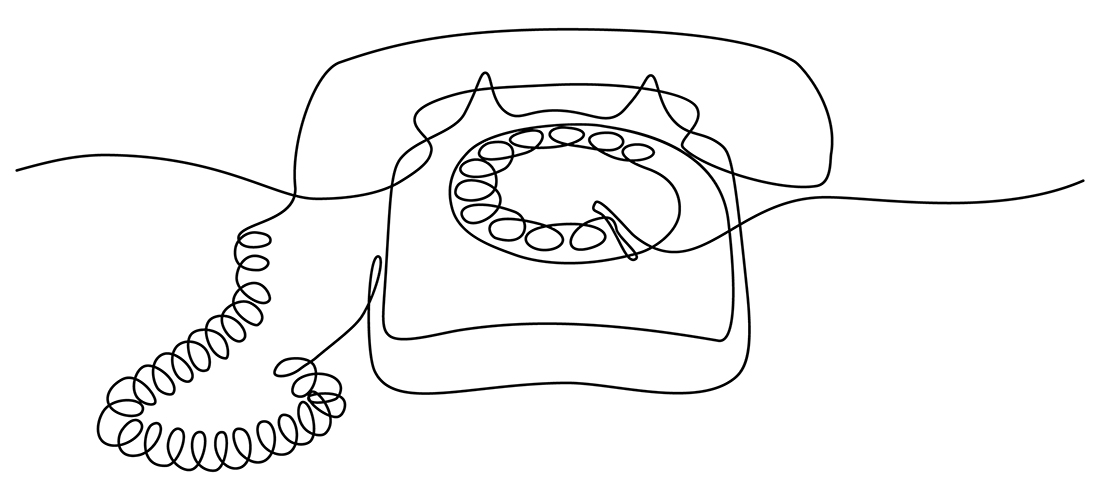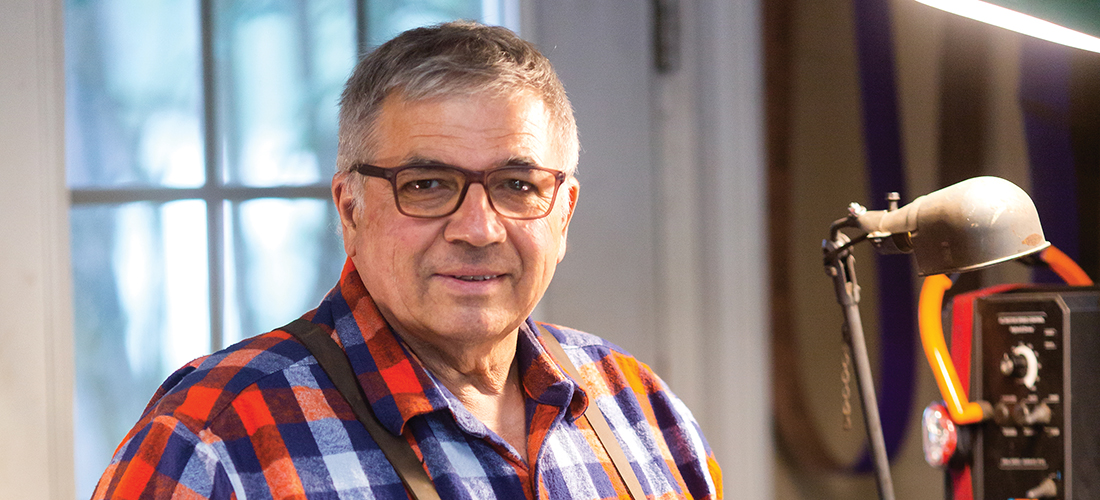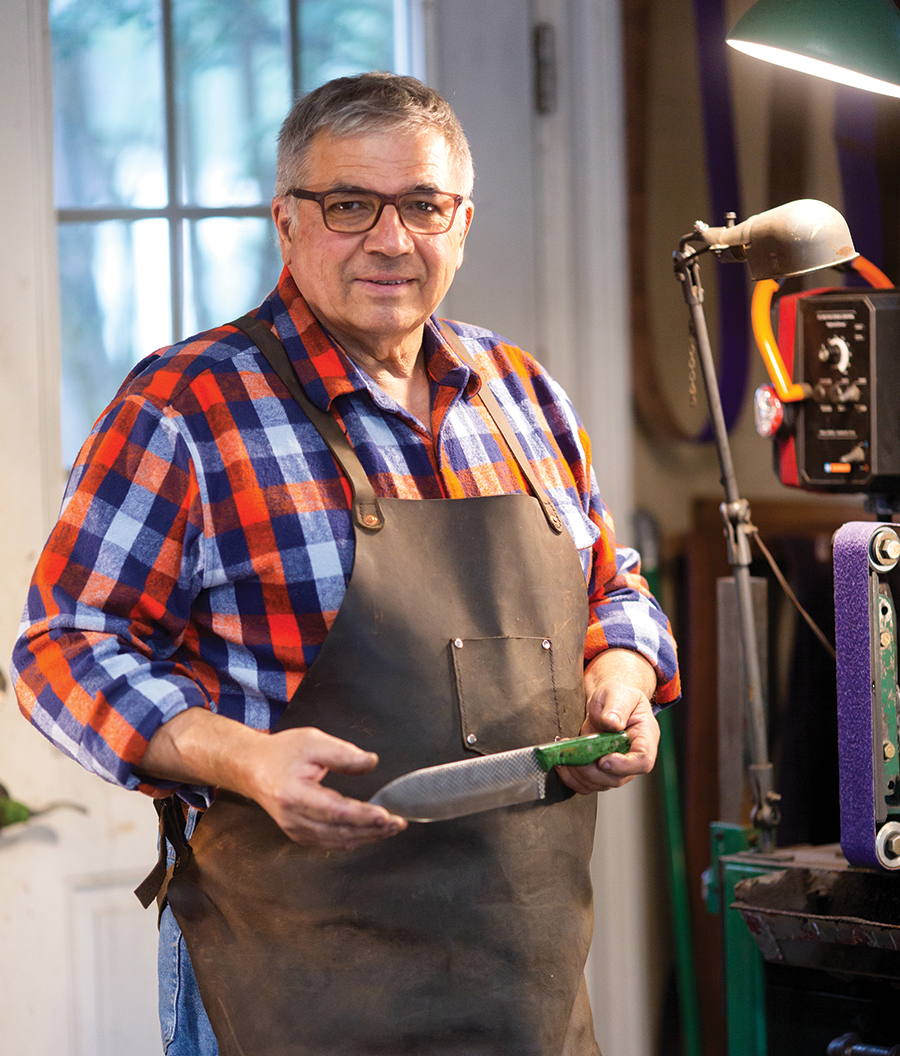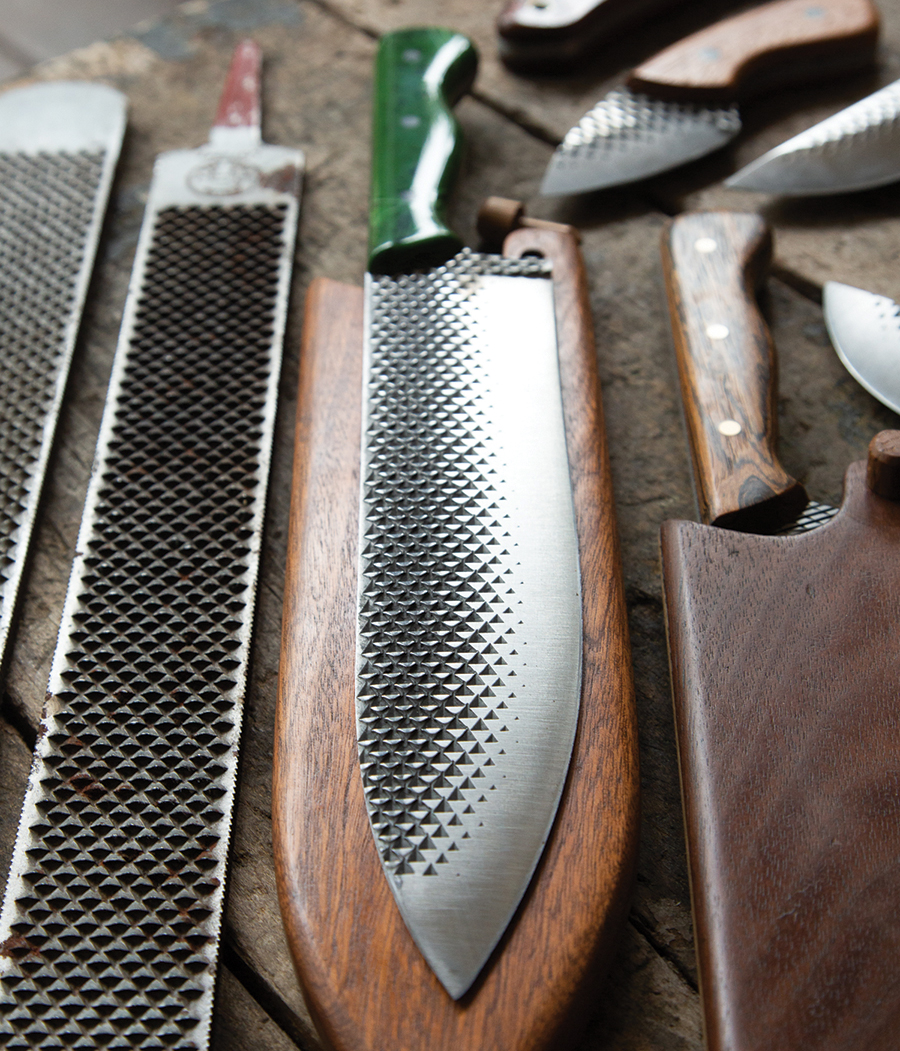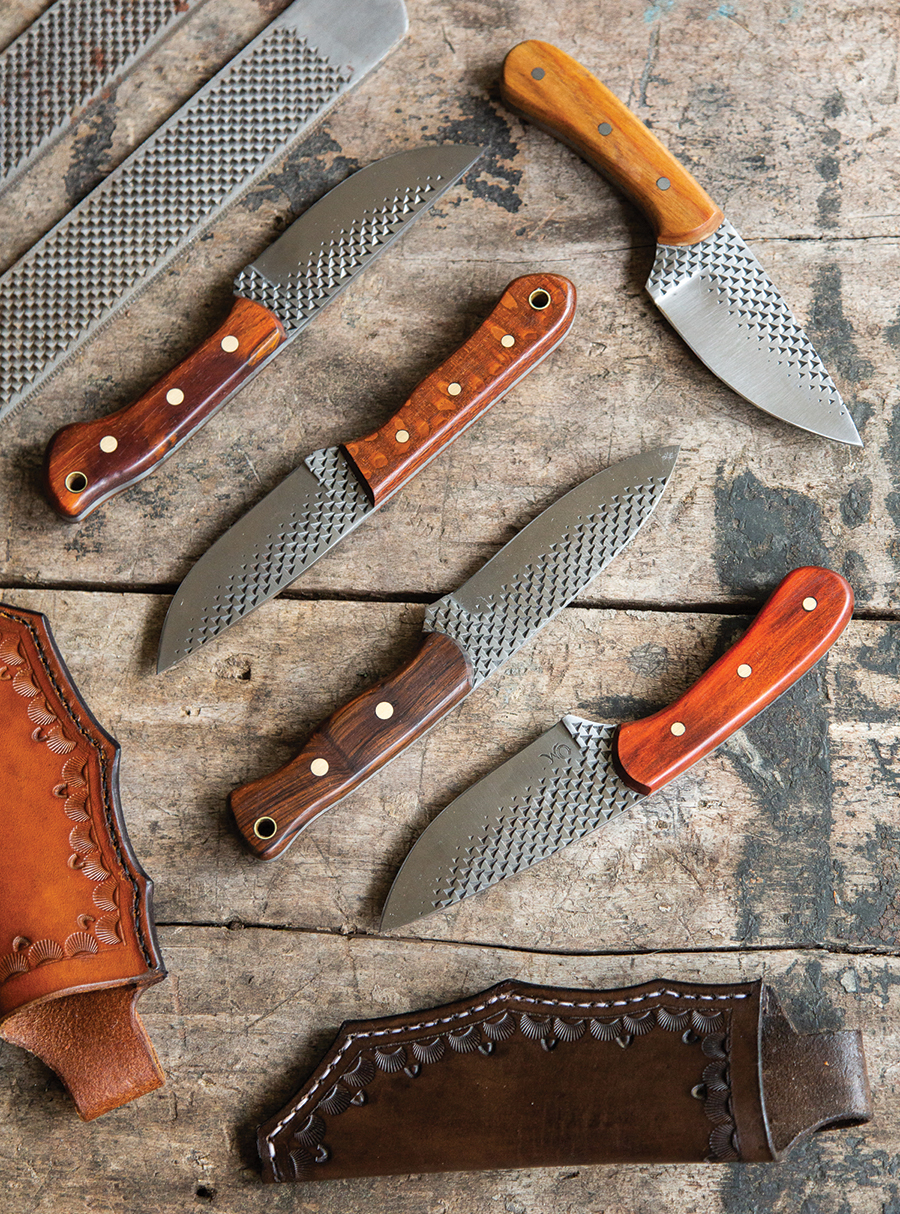CHARACTER STUDY
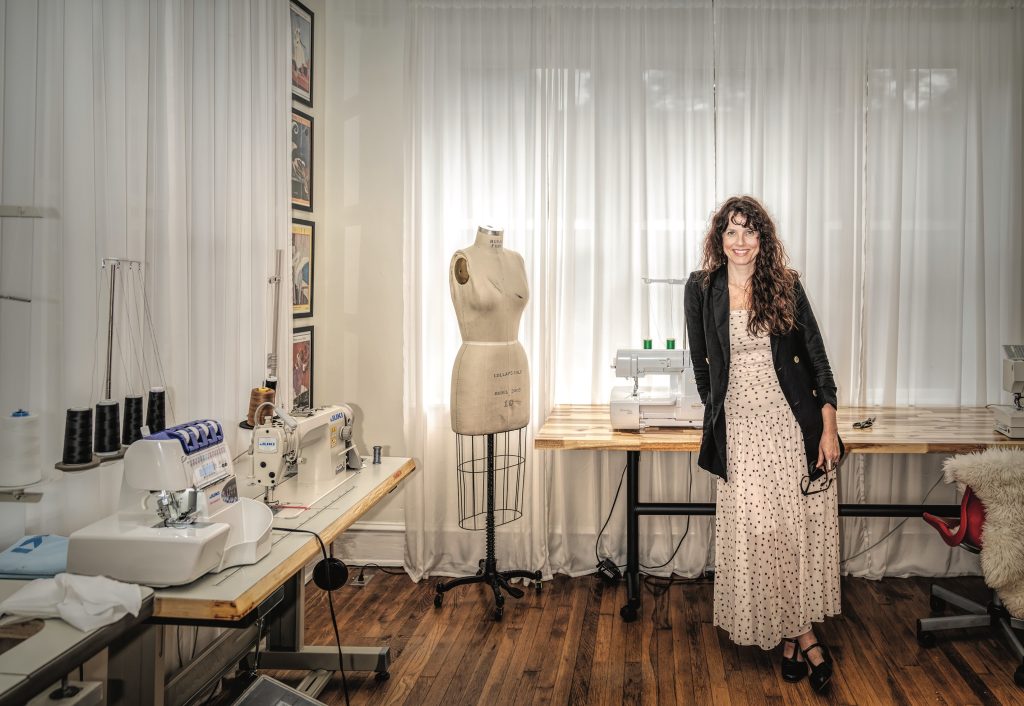
Oh, I Can Make That!
Andrea Jones tailors the Pines
By Jenna Biter
Brass picture lights illuminate a wall of black and white photographs. One shows a vintage Courier sewing machine. Another shows the workspace of a white-haired tailor in Modena, Italy. He’s mid-stitch with a garment beneath his hands.
Andrea Jones’ father lived in Modena for a year or two, and he captured the scene at his daughter’s request. She couldn’t pass up the opportunity to have an Italian craftsman inspiring her from the wall of her tailoring shop in Southern Pines.
Jones opened Andrea Marie Tailoring last July. Within the month, she’d already served six brides, and filled and refilled an industrial clothing rack with incoming and outgoing alterations. A year later, she’s even busier.
“I need to wipe this down because I had a bride in here last night,” Jones says. The alterations platform glitters like a diamond. “She had sparkles.”
She smiles at the beautiful mess and resolves to sweep it up later. Her auburn curls swing out as she turns on a dime, walks past the Italian tailor and makes an immediate right between the check-in counter and a bench upholstered in denim.
“It’s still a work in progress,” Jones says, surveying her space. Her buoyant tone suggests she’s more excited about what’s to come than hung up on what hasn’t.
Thousands of clients burdened by pants too long or too short, a bridesmaid’s dress in need of “some work” or a thrifted suit that seemed like a good idea at the time have made a beeline for the back left corner of Belvedere Plaza. Oversize, golden letters spell “TAILOR” above black double doors. Welcome to Andrea Marie Tailoring.
The space was originally part of the historic Belvedere Hotel in Southern Pines and more recently housed a tattoo parlor. Sewing machines and spools of thread have replaced the tattoo guns and permanent ink. Though different, the hum of machinery drones on.
A typical week might include sewing on rank for promoted soldiers, mending holes in well-loved denim and nipping in a bridal bodice.
“My two loves right now are suiting and bridal,” Jones says, trying the combination on for size. “I like the juxtaposition of those two different worlds.”
After living in the Sandhills for seven years, Jones decided to bring her more than two decades of professional tailoring experience to her very own shop. The decision was a lifetime in the making.
“To be honest, I just couldn’t afford to go out and buy new clothing,” Jones says, remembering her humble beginnings. Her mother, Rosaline, taught her how to make the dresses she couldn’t afford to buy. With a needle in hand and knowledge in head, she threaded her way through school, constructing her own homecoming and prom dresses. She didn’t need a fat wallet to purchase the latest fashions by Gucci or Prada; all she needed was lookalike acid-green lace, a sewing machine and the muscle memory in her hands.
“It feels like a superpower,” Jones says with a laugh. “Oh, I can make that!” She slices her finger through the air like Fairy Godmother conjuring Cinderella’s glittering gown out of sooty rags. In a world where so much is done by swiping and typing, there is something almost magical about the physical work of the hands.
Jones nurtured her superpower while studying at Brigham Young University, where she spent off-hours working in the school’s tailoring department.
“I knew I had some skills, so I applied for that, got the job, and they taught me everything,” she says.
“Everything” was a lot to learn.
“We’re talking hundreds of suits coming in at all times,” Jones says.
She altered wedding dresses for brides, mended uniforms for the university and even fielded the occasional head-scratcher. “Some guy came in one day and asked, ‘Can you put a zipper in my turtleneck?’”
The pace was high, and Jones was an achiever. She worked her way into management and eventually supervised students just like herself. After marrying and having a baby, she bid goodbye to the department, and the young family bounced around the country as military families do.
“I’ve worked with whoever I could, whenever I could,” she says.
Jones worked long hours at dry cleaners, created custom bridal gowns, altered vintage clothing for herself, designed dresses for manufacture, built a community with other home sewists, and started social media channels to share her know-how. She even sells her own home-sewing patterns online through her company, Mark Patterns. If it involves a needle and thread, fabric or clothing, Jones has probably tried her hand, or she’ll be getting to it soon.

